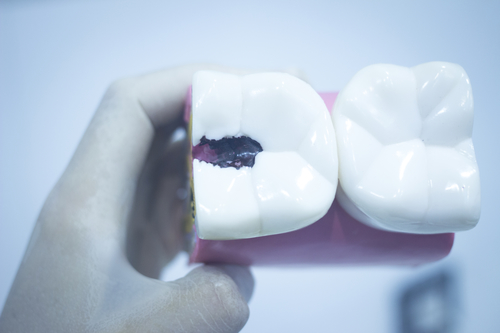Why is Toothpaste Minty?
Ever wondered why almost every tube of toothpaste you pick up is mint-flavored? While some brands offer other options, mint dominates the toothpaste world. But how did that even start?...

Dental fillings are an efficient and cost-effective treatment for repairing tooth decay. The word filling is used to describe the actual material used to fill cavities in the teeth, and while a filling is very durable and can last for years, they rarely last forever.
Sometimes, fillings simply fall out or become loose. If this happens to you, knowing what to do at that moment will help alleviate some stress and give you the confidence in knowing you’re properly handling the situation is key.
Follow these steps if you notice a filling is loose or has completely fallen out.
While losing a filling is rarely an actual emergency, it can easily feel like one because the exposed tooth tissue is often sensitive to temperature, pressure or air causing it to be quite painful and uncomfortable until you are able to get the filling replaced. Calling your dentist as soon as you notice the filling is loose or missing is the best way to minimize any pain and discomfort you’re going to feel by losing it.
We try our best to see patients with emergency situations as soon as possible, but timing isn’t always on our side with dental emergencies. Perhaps you’re on a family vacation away from home, or it’s late on a Saturday night and you haven’t been able to reach anyone in the dental office yet.
Before you can be seen by the dentist, here’s what you can do in the meantime:
Clove Oil
Applying a small amount of clove oil to the sensitive area with a cotton swab will give you immediate pain relief. You can find clove oil in drugstores or in the spice aisles of many supermarkets or grocery stores.
Dental Cement
You can put dental cement directly on the tooth surface to help protect and seal the area until you’re able to see your dentist. This can also really help to relieve the pain and sensitivity you may be experiencing from having the tooth exposed.
Depending on the reasoning behind why your filling became loose or fell out will also determine how your filling will be restored by your dentist. Decay may have changed the shape of your tooth, which usually means that your dentist will need to prepare the tooth again by removing the decay that developed between the old filling and the tooth. Once the decay has been removed and the tooth has been prepped, a new filling will be placed.
Restorations or fillings all have a breaking point and will eventually fail and need replacement. No filling will last forever, and regular visits to the dentist will help determine when is the best time to be proactive and replace a restoration. Many factors can contribute to a filling becoming chipped or broken including:
Regular dental care is always recommended for many reasons, one of them being so your dentist can detect potential problems and monitor things like fillings before they become loose and fall out. Your dentist can identify open margins or uneven wear before you even realize there may be a problem. If left untreated, a lost or chipped filling could lead to a root canal and possible loss of the tooth, so help us help you in being proactive with routine dental cleanings and exams twice a year.
Schedule an exam with Dr. Beaudean today to check on the life expectancy of your dental fillings today.